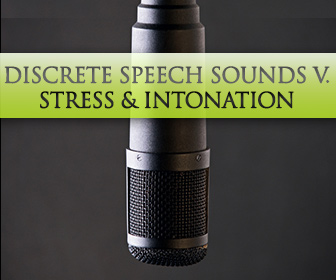Knowing Where to Begin: Excellent Pronunciation Skills Diagnostics


If a student had mastered the basics of native-sounding stress and intonation in American English, then that was going to contribute much more to her overall general comprehensibility than whether or not her “r” or “th” sounds were clear. (Or the “l” sound. Or the “ee” or “eh” sound. And so on.) Being a dutiful beginning teacher, I plowed on, teaching students to really stress those content words and reduce the structure or grammar words. I taught five or six kinds of sentence stress: information questions, yes/no questions, basic sentence stress for affirmative sentences, and so on. My students’ intonation and stress improved. And I tried to ignore that even though they sounded native-like, approximately, I really couldn’t understand them. More and more I was reminded of a Saturday Night Live routine in which a comedian, a very talented actor, used to play a teacher or a drill sergeant and come out give orders or ask questions of his troops or students, which the audience could recognize as questions or commands by the intonation patterns, but not specifically what the guy was saying because the specific speech sounds were so inaccurate. And the students’ or soldiers’ befuddlement was hilarious because its origin was not only in not understanding but also in thinking that they should be able to understand, they almost understood. But they didn’t.
Stress and intonation are important. But clear articulation of individual speech sounds is also important. So how do you proceed in teaching your pronunciation class, and what do you focus on: stress and intonation patterns or discrete speech sounds?

As in most things educational, let student need guide you. Start by administering a pronunciation diagnostic to all students at the beginning of the term, preferably taping each student in a short segment that assesses his vowel sounds, different problem area consonants such as “th,” “l” and “r,” question intonation, sentence stress, and so forth. When doing the assessments, note problem areas for each student, and then look for common problem areas for the entire class: most ESL students, for example, have trouble with sentence stress, and many have trouble with the “th” sound. The common areas will dictate the course curriculum: it makes little sense to focus on the “sh” and “s” distinction, for example, if no student is having trouble with that, and focus should be moved to where many students are having trouble, such as basic sentence stress and reductions.
The instructor might begin, for example, by giving a general overview of English vowel sounds, if this is where most students have trouble, or in different intonation patterns. From this general plan, the instructor can do more specific weekly and daily planning. If a week is to be devoted to intonation patterns, for example, then at least several days should be devoted to question intonation.
Frequent assessment, both informal and formal, is required in an ESL class to monitor student progress and mastery. A focus on more informal assessment is usually best: a teacher often learns more about student progress from just walking around her class and seeing how students are doing with yes/no questions and short answers, for example, (e.g., “Can you cook?” “Yes, I can”) than she will on a large midterm that covers a number of question types. In addition, frequent short quizzes, such as weekly quizzes focused on the instructional point of that week, usually give more information the instructor can actually use—“It seems they have mastered front vowel sounds; it’s time to move on”—than a large test that covers a number of instructional points (“Well, they have some mastery of vowels, I think, but I’ll have to look closer to determined who is proficient in which ones.”) In addition, frequent small tests quizzes are less stressful for students: if they blow one, their whole semester grade isn’t ruined. Finally, frequent assessment also reduces a need to schedule make-ups if three students suddenly have doctor or dentist appointments they just can’t miss on the day of the big test: the teacher can say she’ll drop one weekly quiz grade for all students to cover such emergencies.
It may be you had only planned to spend a day on the “t” and “th” distinction, but your informal assessment of student progress indicates they need more time on this: so devote another day for this. You will probably need less time in some other area and can “borrow” time from “ed” endings, for example.
Pragmatics has to do with how we actually use language: for example, speakers don’t go around using the “ee” vowel sound in isolation, of course. However, in English we do use this sound a lot for numbers and related speech acts such as asking the price of something: “How much is this dish?” and then having to clarify the price, as even native speakers frequently have to: e.g., “Did you say thirteen or thirty?” This clarification is often followed by having to say the actual number (again, as even native speakers have to sometimes as the words sound so alike): “That’s thirteen dollars! One-three. Not three-oh.”
For efficiency and transfer of learning, combine when possible instruction in the larger, global areas of pronunciation (the intonation and stress patterns) with the discrete speech sounds. Using the example above, teaching the pronunciation of numbers is an ideal opportunity to also teach information questions: “How much does it cost?” “How long does the sale price last?” “What other colors does it come in?” and forth. At the same time, the instructor is also teaching the pragmatics of discussing purchases.
Deciding the focus of an ESL pronunciation class isn’t easy, especially as common pronunciation teaching practice can contradict conventional wisdom and experience. However, with careful assessment and planning, the instructor can create a term of meaningful activities that will result in student progress and development of pronunciation skills.